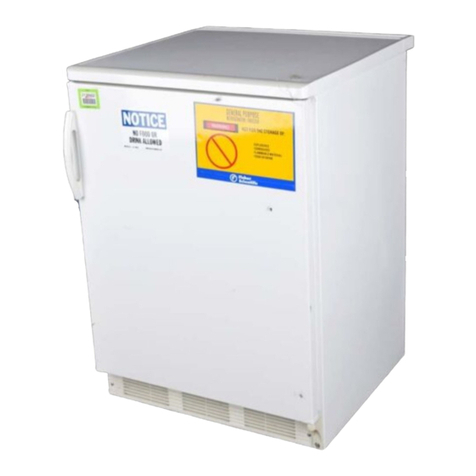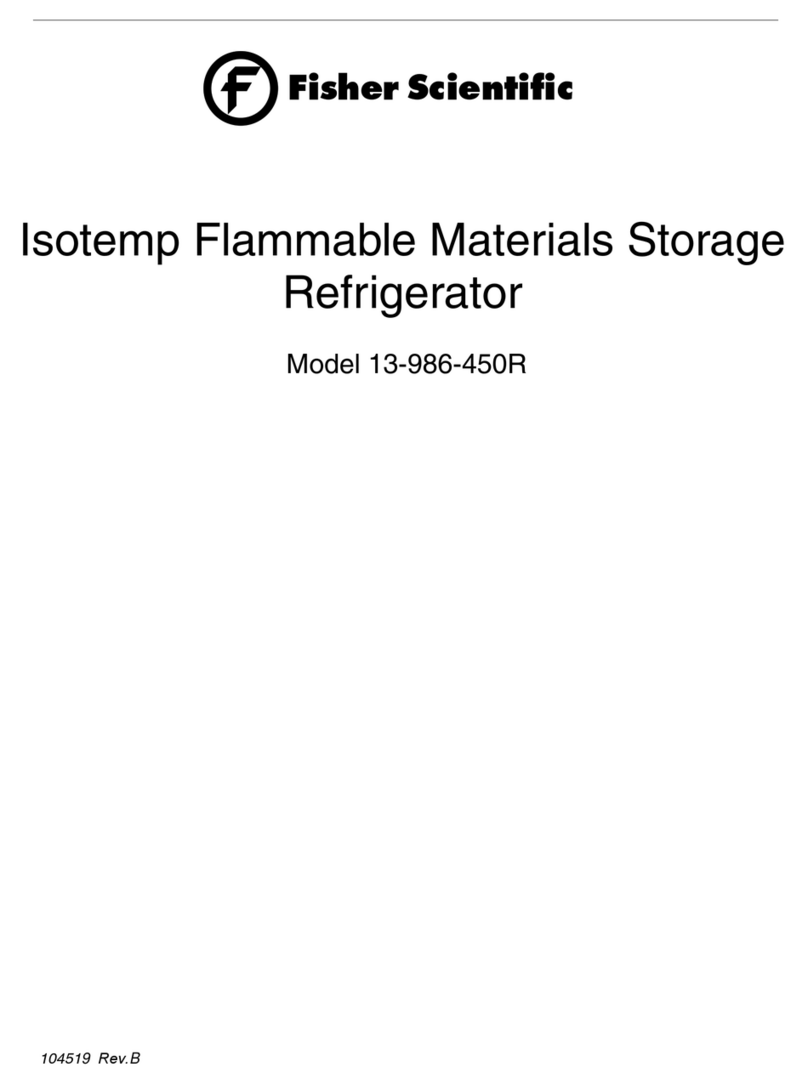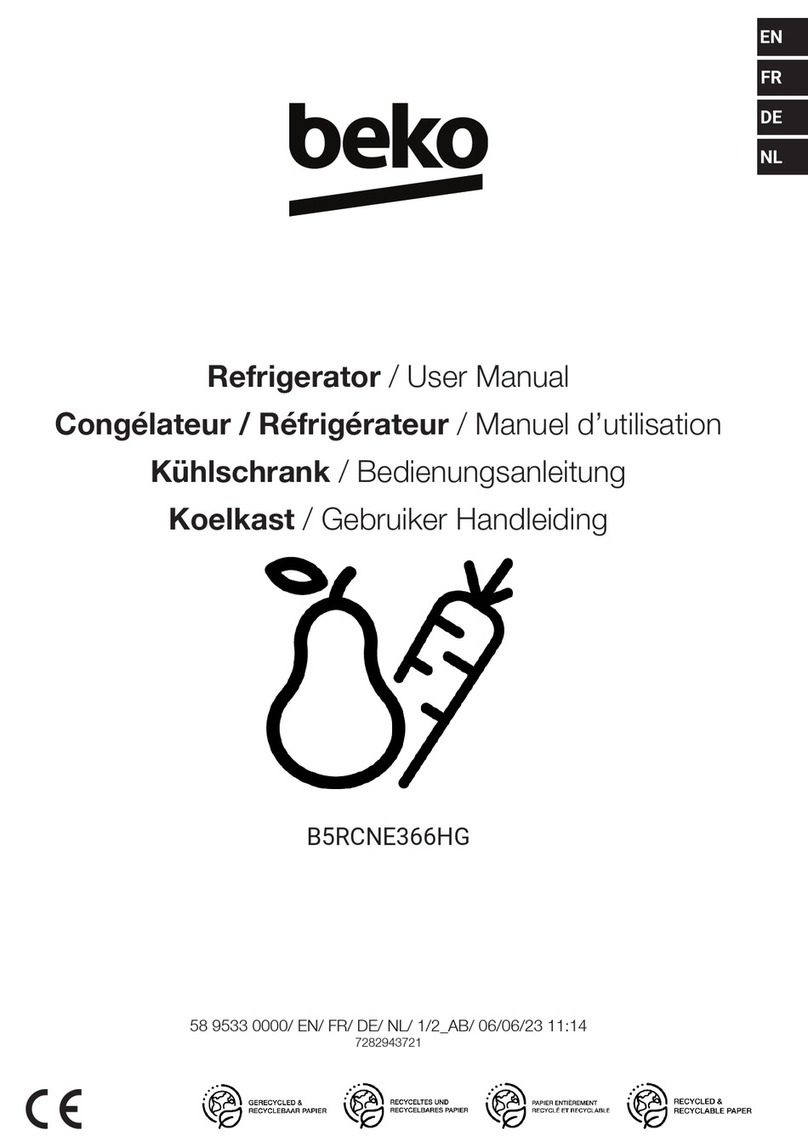
Explosion-Proof Refrigerator/Freezers and Flammable
Material Storage (FMS) Refrigerator/Freezers have dis-
tinct features. Understanding the proper application for
each is necessary to assure safe operation.
Explosion-Proof
Refrigerator/Freezer
The Explosion-Proof Refrigerator/Freezer (13-986-116A/
10ECEEFSA) has been designed to store volatile or
flammable materials and can be used in hazardous loca-
tions containing explosive atmospheres. These units are
also suitable for storing such volatile materials as ethyl
ether, hexane, naptha, methyl, ethyl ketone, acetone, ben-
zol, butane, gasoline, alcohols, cyclopropane, lacquers,
solvents, fuels, pharmaceuticals, and anesthetics.
Explosion-Proof Refrigerators (13-986-116A/
10ECEEFSA) comply with the following:
A. UL listed, Commercial Refrigerator/Freezer for
hazardous locations, control number 27R2.
B. Suitable for use in Hazardous Locations;
Operating Temperature Code T4A, Class 1,
groups C & D., Class I Zone 1 Group IIB
C. Occupational Safety and Health Standards,
29CFR 1910.307.
FMS Refrigerator/Freezer
The FMS refrigerator/freezer (13-986-111A/10FCEEFSA)
has been designed to provide maximum protection for
storing and refrigerating volatile or flammable materials.
When used in a ventilated laboratory, non-hazardous
area, this product complies with the following code,
Federal Agency Standard and Listing.
A. National Fire Protection Association Code
NFPA 45
B. UL listed, Special Purpose Refrigerator.
6
Applications
Note
This instrument can also be used in
non-hazardous areas, where you
wish to refrigerate volatile or flam-
mable materials.
Warning
THIS PRODUCT IS NOT
APPROVED TO BE USED IN HAZ-
ARDOUS LOCATIONS CONTAIN-
ING EXPLOSIVE ATMOSPHERES.




































